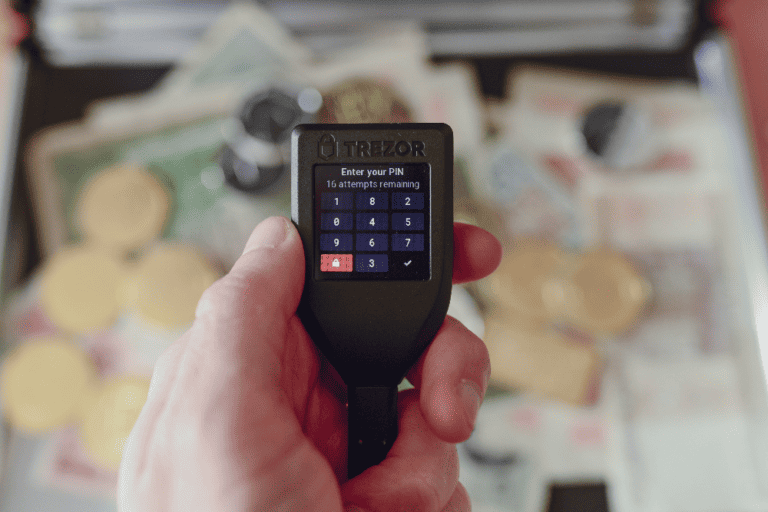How To Send Remittance Payment Anywhere: The Ultimate Guide for Digital Nomads and Remote Workers
As a digital nomad or remote worker constantly on the move, you may find yourself in need of sending and receiving money from different parts of the world.
In this comprehensive guide, we will explore the best ways to send remittance payments internationally, ensuring a smooth and secure experience no matter where you are. Drawing from my own experiences as a remote worker, I’ll also provide personalized insights and practical tips to enhance your understanding of the remittance process.
Ready to navigate the world of remittance payments and facilitate your first international transaction? Let’s dive in and get you started on this financial journey.
What Is a Remittance Payment?
First, let’s understand what remittance payments are and why they hold significant importance for global travelers like us.
A remittance payment refers to the act of sending money, typically by an individual or business, to someone in another location, often a foreign country. Remittance payments are commonly made by migrants or individuals working abroad who send money back to their families or loved ones in their home countries.
These payments serve as financial support and are crucial for supporting the livelihoods of recipients in many developing countries. Remittance payments can be sent through various methods, including bank transfers, online platforms, mobile payment apps, or traditional money transfer agents.
What Are Some of the Best Ways to Send Remittance Payments Internationally?
1. Online Money Transfer Services
Harnessing the power of technology, online money transfer services have revolutionized the remittance process.
These platforms offer convenient and cost-effective solutions for sending money worldwide. Some top recommended services include TransferWise, Xoom, and WorldRemit, which provide competitive exchange rates and low fees.
2. Bank Transfers
Traditional yet reliable, bank transfers enable you to send remittance payments directly from your bank account to the recipient’s account.
However, keep in mind that bank transfers can be slower and may involve higher fees compared to other methods. It’s crucial to inquire about exchange rates and fees before initiating the transfer.
3. Prepaid Debit Cards
Some companies offer prepaid debit cards that can be loaded with funds and sent to recipients. The card can then be used for purchases or ATM withdrawals.
4. Remittance Service Providers
These specialized companies focus solely on facilitating international money transfers.
Western Union, MoneyGram, and Ria are prominent players in this industry, providing extensive networks of agents worldwide to receive cash remittances. While their fees may be higher, they offer convenient options for recipients who prefer cash pickup.
5. Mobile Payment Apps
With the widespread use of smartphones, mobile payment apps have gained popularity for remittance payments. Apps like PayPal, Venmo, and Payoneer allow convenient and instant transfers, often at competitive rates.
Before using this method, it is important to ensure that the recipient has access to the same payment app for a seamless transaction.
What Are the Factors to Consider When Choosing a Remittance Payment Method?
When selecting a remittance payment method, several factors should be taken into account:
- Speed of Transaction: Consider how urgently the recipient needs the funds and choose a method that offers swift transfers.
- Exchange Rates and Fees: Research and compare exchange rates and fees offered by different providers to maximize the value of your remittance payment.
- Security and Safety Measures: Opt for reputable and secure platforms to ensure the safety of your funds and personal information.
- Accessibility and Convenience: Evaluate the accessibility of the chosen method in the recipient’s location and consider their familiarity with the process.
Moreover, to ensure a seamless remittance payment experience, keep these tips in mind:
- Ensure Accurate Recipient Details: Double-check the recipient’s information, including their name, bank account number, and contact details, to avoid any errors or delays.
- Double-Check Exchange Rates: Stay updated on exchange rates to understand the actual value of your remittance payment.
- Monitor Transaction Status and Keep Records: Track your transactions’ progress and save receipts or confirmation numbers for future reference and reconciliation.
- Stay Updated on Regulatory Changes and Compliance: Be aware of any regulatory changes, such as financial regulations or tax requirements, that may affect your remittance payments.
How To Send Remittance Payment Anywhere? (Final Thoughts)
Throughout my professional life spent in various countries, sending and receiving money internationally has become a daily routine. However, this process has often been plagued by challenges, including high transaction fees, lost or delayed funds, and other complications.
And to be frank, despite the advances made by traditional banking and the rise of FinTech companies, the traditional method of sending money globally still falls short in terms of speed and security in my opinion.
That’s why I’ve become a supporter of using cryptocurrencies for payments and admire crypto companies such as Ripple, which provide financial institutions with blockchain-based solutions to make remittances quicker and more affordable.
However, I acknowledge that cryptocurrency may not be suitable for everyone, as it is still not widely understood or adopted.
So, if you’re sticking to the usual methods I mentioned before, just remember these simple tips:
- Know your destination: Different countries have different regulatory hurdles for receiving funds. Do your research to avoid delays and unexpected fees.
- Compare, compare, compare: Don’t get stampeded by the first service you see. Compare transfer speeds, fees, and hidden charges before you commit. Trust me, your nomadic budget will thank you.
- Embrace online accounts: Signing up for an online account with your chosen service streamlines future transfers. No more frantic searches for internet cafes with dodgy printers!
- Security first: Use strong passwords, enable two-factor authentication, and be wary of phishing scams. Remember, digital nomads, online safety is paramount.
By following these easy tips and doing a bit of homework, you’ll be a pro at sending and receiving money across borders. Then you can focus on what really matters—exploring the world and making memories that are worth way more than any transfer fee.
By the way, if you’re looking tips on how to remote work from home effectively, check out my blog article “How To Remote Work From Home In 2024: Here Are 7 Tips To Get You Started Easily“.
Disclaimer: The information and opinions expressed in this blog post are for informational purposes only and are not intended to be construed as professional advice. Please consult with a qualified professional before making any financial decisions, traveling, or purchasing a product or service. This information is also based on personal experiences and/or research at the time of writing, and new information and updates may be available on the topic being discussed. Please conduct further research before making any decisions.








